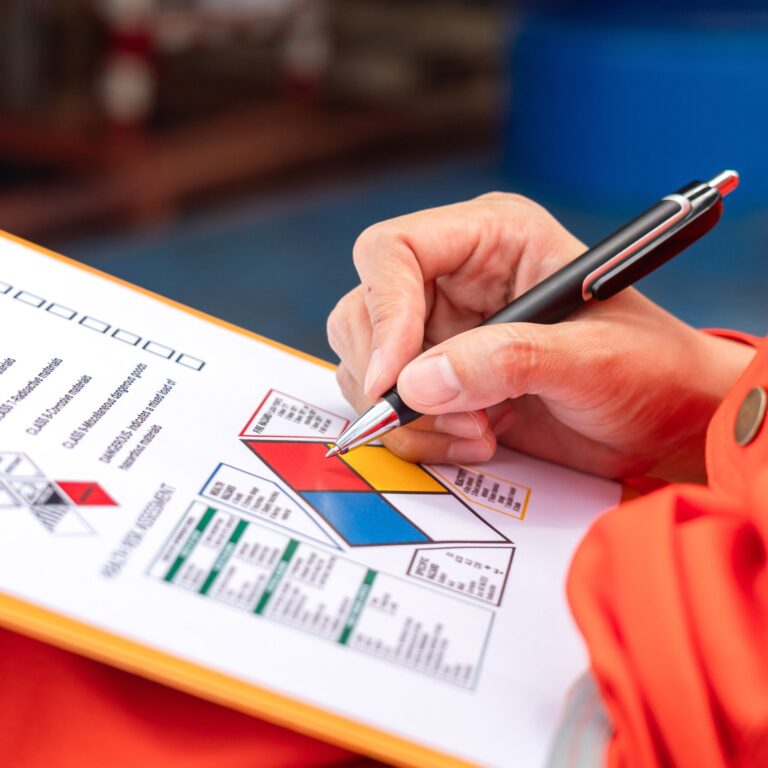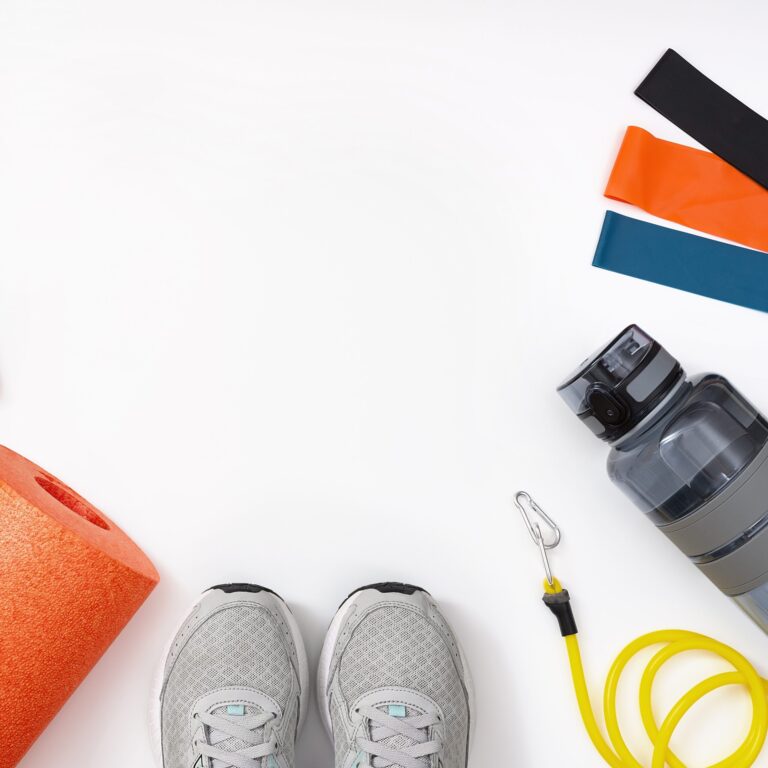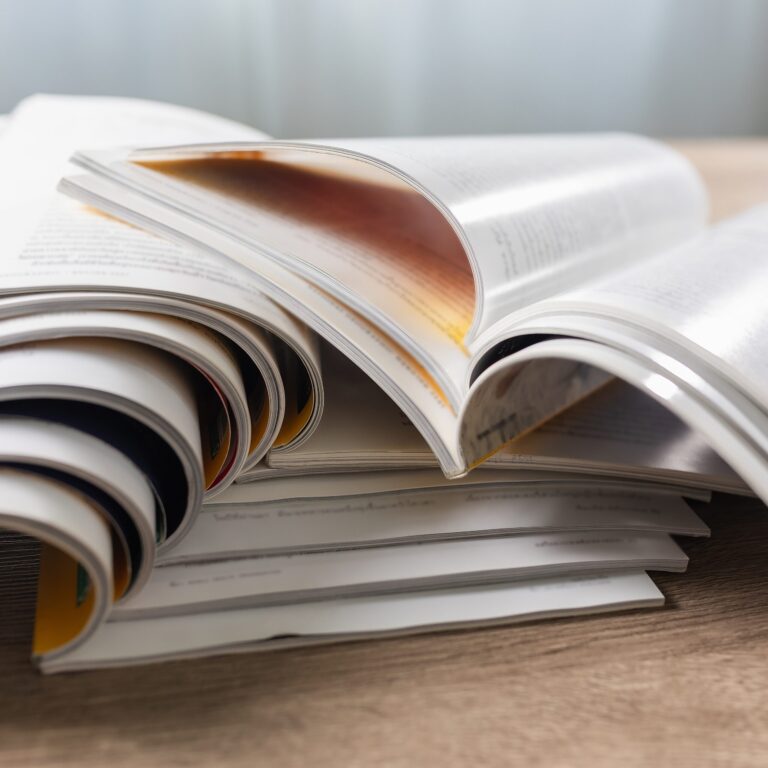Product Safety
The Applied Safety and Ergonomics company joined the Rimkus family of brands in 2020. This strategic collaboration has allowed us to expand our product safety consulting services globally. As a specialized team within the Rimkus Life Sciences group, the Product Safety team offers comprehensive analysis, expert insights, training, and data-driven solutions to our esteemed clients. Our seasoned safety consultants bring decades of experience across a diverse range of products and environments, including consumer goods, industrial equipment, occupational safety, chemicals, transportation, and both public and private premises.
Tailored to fit the needs of our clients, our product safety and technical consultations provide guidance and address challenges for a variety of safety consulting services. In addition, Rimkus develops and implements evaluation protocols for a wide range of human factors and safety issues, including symbol comprehension, usability, and more. We are equipped to perform slip testing for walking surfaces, human vibration testing, and other custom assessments.
Rimkus experts can deliver relevant, high-quality training onsite, offsite, and via web conferences to help our clients be well-informed and empowered to make effective decisions. We provide usability evaluation and testing with products and procedures, including consumer products, manufactured goods, medical equipment, instructional procedures, and other forms of written information. We delve into corporate histories, hazard communications, and the development of historical regulations, standards, and norms, reaching back to the late 19th century.
Read more about the many product safety consulting services that our team can provide.
Our Product Safety Services
Drawing upon extensive experience, the Rimkus Product Safety team adeptly handles tight schedules, multidisciplinary teams, and unique challenges. Whether it’s a brief advisory session or an ongoing partnership, we offer proven solutions to clients with projects of all sizes spanning various sectors.
Our technical consultations cover the following key areas:
Product Safety:
- Assessment of new and existing products
- Product analysis
- Product evaluations
- Product safety management
- Accident analysis and evaluation
- Hazard analysis and risk assessment
- Corrective actions and consumer product safety recalls
Human Factors Consulting:
- Information processing and decision-making
- Understanding human error
- Movement, stability, and climbing considerations
- Cognitive processes, learning, and memory
- Sensation and perception
- Anthropometry (body measurements)
- Social and environmental influences
- Risk perception
- Reading comprehension and language understanding
- Biomechanics
- Visibility
- Fatigue and environmental stressors
- Age-related human performance
Warnings and Risk Communication:
- Designing safety signs and labels
- Crafting clear instructions, manuals, and product documentation
- Packaging safety
- Chemical labeling and safety data sheets (SDS)
- Safety symbols
- Web-based safety information
- Compliance with standards and regulations
Occupational Safety and Industrial Ergonomics:
- Assessing occupational safety programs
- Incorporating ergonomic principles
- Ensuring safety in industrial process and equipment design
- Investigating industrial accidents
- Analyzing job roles and designing effective workflows
- Implementing machine guarding measures
- Managing hazardous energy (lockout/tagout)
- Benchmarking industry practices
- Studying human vibration and biomechanics
- Enhancing material handling practices
- Ensuring Occupational Safety and Health Administration (OSHA) compliance
- Addressing construction safety
- Providing personal protective equipment guidance
- Supporting mergers and acquisitions
- Implementing fire prevention strategies

For more than 30 years, Rimkus human factors consultants have assisted clients in making informed decisions regarding safety, risk assessment, and human factors. We specialize in navigating unique challenges with confidence towards making safer products. Some of the inquiries we’ve successfully addressed for our clients include the following:
Hazard Analysis, Risk Assessment, and Safety Decisions
- Innovative Products: For clients developing novel products that don’t conform to any existing applicable safety standards, we can help identify potential safety issues and create appropriate warnings.
- Risk Evaluation: Our expertise extends beyond identifying product failures. We assist engineers in evaluating risks and anticipating user errors or misuses.
- Design and Warning Options: When faced with safety issues, we guide clients in choosing the most effective design and warning strategies.
- Equipment Decisions: For specialized applications, we help determine whether safety equipment should be standard or optional.
Developing Effective Safety Information
- Audience-Specific Communication: Whether purchasers, installers, users, or maintenance staff are the primary audience, we tailor safety information to different roles.
- Empowering Technical Staff: Our training helps prepare technical writers and engineers to create clear and effective warnings.
- Efficient Warning Design: We help clients streamline the design process by developing tools and efficient workflows for creating warnings.
- Early Warnings Integration: To prevent last-minute disruptions during product launches, we emphasize early warnings development.
- Competitor Analysis: We assess competitors’ warnings for relevancy to determine if our clients should develop similar ones.
Safety Symbols and Labels
- Compact Symbol Design: For small products with limited space, we create concise safety symbols that effectively convey messages.
- Global Symbol Usage: We explore whether safety symbols can replace multilingual text on product labels for international markets.
- Testing Compliance: Our experts verify safety symbols against American and international standards.
- Text-Symbol Integration: We design labels that combine safety symbols with clear text for optimal understanding.
Standards and Regulatory Compliance
- Technical Information for Regulators: We assist in presenting technical safety information to regulatory bodies, such as the U.S. Consumer Product Safety Commission (CPSC).
- Standard Safety Messages: Our guidance helps industry groups develop consistent safety messages.
- Compliance Safety Consulting: We help clients align product safety labels with the American National Standards Institute (ANSI) Z535.4 and The International Organization for Standardization (ISO) 3864-2, catering to U.S. and international customers.
Safety Information in Manuals and Online Channels
- Manual Organization: We prioritize and reorganize safety messages within manuals.
- Installation Instructions: We develop clear instructions that help guide users to check for proper installation.
- ANSI Z535.6 Conformity: We create manuals that adhere to ANSI Z535.6 standards.
- Online Safety Information: We format safety content for websites, considering ANSI Z535 standards.
- User Accessibility: For products without manuals, we direct users to online safety resources.
- Online Retailer Channels: We strategize how to provide safety information effectively on ecommerce platforms.
- Product Videos and Social Media: We advise on incorporating safety information into videos and developing social media policies that reflect safety priorities.

The Rimkus Product Safety team is adept at meticulously evaluating chemical hazard communications, including labels and Material Safety Data Sheets (MSDS), against both historical and current standards and norms. Our consultants have not only published and lectured on related human factors and chemical hazard topics, but also actively participate in engagements for the Society for Chemical Hazard Communication to promote knowledge and awareness in all areas of chemical hazard communication.
Our communications expertise extends to a wide range of chemicals and hazards, including:
- Aerosols
- Adhesives
- Asbestos
- Benzene
- Carbon monoxide
- Carcinogens
- Cleaners
- Cosmetics
- Flammables
- Gasoline
- Groundwater contamination
- Lead
- Paints
- Pesticides
- Solvents
- Vinyl chloride
- Volatile Organic Compounds (VOC)
- Welding consumables
We have an extensive reference library related to chemical hazard communication spanning the early 20th century through the present. Some of the resources we regularly consider include the following:
Workplace Settings
- OSHA regulations, rulemakings, and interpretations
- OSHA Hazard Communication Standard (“HazCom” or HCS)
- OSHA chemical-specific standards (Vinyl Chloride Standard, Asbestos Standard, Benzene Standard, etc.)
- OSHA Air Contaminants Standard
- OSHA Respiratory Protection Standard
- Bureau of Mines (BOM) and Mine Safety and Health Administration (MSHA) regulations
- ANSI Z129.1 and ANSI Z400.1 standards for chemical labeling and MSDSs
- State regulations
- American Conference of Governmental Industrial Hygienists (ACGIH) Threshold Limit Values (TLVs)
- NIOSH Health Hazard Evaluations (HHEs)
Consumer Settings
- Consumer Product Safety Commission (CPSC) regulations
- Federal Hazardous Substances Act (FHSA)
- Food and Drug Administration (FDA) regulations
- Environmental Protection Agency (EPA) regulations
- Federal Insecticide, Fungicide, and Rodenticide Act (FIFRA)
- State regulations (e.g., California’s Proposition 65)
Historical Settings
- Pre-OSHA safety and health regulations (e.g., Longshoremen’s and Harbor Workers’ Compensation Act)
- Pre-OSHA hazard communication regulations (e.g., Department of Labor Hazardous Materials Regulations for Ship Repairing, Shipbuilding, and Shipbreaking)
- OSHA Cancer Policy
- Manufacturing Chemists’ Association (MCA) Manual L-1: Guide to Precautionary Labeling of Hazardous Chemicals
- National Toxicology Program (NTP) Reports on Carcinogens
- International Agency for Research on Cancer (IARC) Monographs and carcinogen classifications
- American Conference of Governmental Industrial Hygienists (ACGIH) Threshold Limit Values (TLVs)
- Trade and industry publications

Rimkus experts specialize in a wide range of human performance and product safety testing, tailored to meet our clients’ unique needs. From custom product assessments to standardized slip testing, our capabilities help ensure accurate results and relevant insights.
Data Acquisition Equipment and Methods
Our commitment to precision relies on cutting-edge electronic data acquisition equipment and customized data collection methods. These tools are adept at efficiently and accurately conducting various field and laboratory tests. We adhere to industry-accepted practices and standards, including those set by the American Society for Testing and Materials (ASTM), ISO, ANSI, and other relevant bodies.
Rimkus has a comprehensive suite of testing and analysis services that covers a diverse array of parameters. Some of the key areas we specialize in include the following:
- Human Vibration: We assess vibrations experienced by individuals during product use.
- Acceleration/Shock: We evaluate the impact forces and shocks encountered in real-world scenarios.
- Slip Resistance: We measure the slip resistance of surfaces and materials, evaluating the results for ADA slip-resistance requirements.
- Velocity: We analyze the speed and motion characteristics of objects.
- Displacement: We quantify the movement or displacement of components.
- Force: We determine the forces acting on products or structures.
- Torque: We assess rotational forces and twisting effects.
- Stability: We evaluate the stability and balance of objects.
- Pressure: We measure pressure levels in various contexts.
- Light Level: We examine illumination levels for optimal visibility.
- Temperature: We monitor temperature variations during testing.
Symbol Comprehension
Rimkus experts specialize in symbol testing, a critical aspect of ensuring effective communication across diverse audiences. Whether in-person or online, we have successfully conducted symbol testing with participants from around the world, including both English and non-English speakers. Collaborating closely with clients and graphic designers, we help develop and refine new symbols, and modify existing symbols based on the results of comprehension testing. These efforts can help streamline the sometimes complex symbol development process, especially when considering various standards with different provisions. For example, the U.S. standard ANSI Z535.3 and the international standards ISO 3864 and ISO 9186 share common goals by providing guidance for developing and testing symbols but may diverge in other specific provisions. Our role is to bridge these gaps, helping clients understand the nuances and design symbols that align with their unique needs.
Usability
We excel in offering usability support to clients across various domains, including manufactured products, machinery, processes, and written materials. Our wide range of services aims to enhance user safety, optimize the user experience, and help clients adhere to the most rigorous usability standards. For a more detailed breakdown of our offerings and capabilities, see our Usability service section below.
Human Vibration and Biomechanics Testing
The Rimkus Product Safety testing team has extensive experience and qualifications in effective testing across various domains such as human vibration, sound/noise, and applied ergonomics. When a biomechanics expert is needed, we can assist with the following key services:
- Computer Data Acquisition and Analysis: We collect and analyze data related to human vibration, acceleration/shock, and force exertion. Our advanced techniques help us collect accurate measurements and actionable insights for our clients.
- Whole-Body and Hand-Arm Vibration Assessments: Our team evaluates whole-body vibration (WBV) and hand-arm vibration (HAV) to assess their impact on users. This includes analyzing exposure levels and recommending improvements.
- Sound/Noise Measurement and Analysis: Noise exposure can significantly affect user comfort and safety. We measure and analyze sound levels, providing recommendations for noise reduction and better user experiences.
- Ergonomics and Biomechanical Analyses: Ergonomics play a crucial role in product design. The experts in our ergonomics group can assess biomechanics, considering factors like posture, movement, and comfort. Our insights can help guide ergonomic improvements for our clients’ products.
Our team has completed the National Institute for Occupational Safety and Health (NIOSH) training course, “Ergonomics of Occupational Hand-Arm and Whole-Body Vibration in Industry,” reinforcing our expertise used in practical applications across various industries and contexts, such as the following:
- Vehicle Seating: We help manufacturers maintain comfort and safety for drivers and passengers.
- Locomotive Engines and Railroad Track Maintenance Equipment: We can enhance safety and minimize vibration-related fatigue for maintenance crews.
- Construction and Mining Equipment: We assist in optimizing usability and reducing health risks for operators.
- Off-Road Equipment: We help address vibration and noise concerns in rugged environments.
- Heavy Trucks and Auto Haulers: We can improve driver comfort during long hauls.
- Lift Trucks and Forklifts: We contribute to the improvement of operator well-being and productivity.
- Boats and Boat Seats: We help provide comfort and safety for marine enthusiasts.
- Power Hand Tools: We can minimize vibration-related injuries for workers.
- Consumer and Commercial Chairs: We assist in the development of comfortable seating solutions.
We utilize many human vibration standards and ergonomic standards for testing and analysis of products, including the following:
- ISO 2631-1 – Mechanical Vibration and Shock – Evaluation of Human Exposure to Whole-Body Vibration – Part 1: General Requirements
- ANSI S2.72/Part 1 – Mechanical Vibration and Shock – Evaluation of Human Exposure to Whole-Body Vibration – Part 1: General Requirements (formerly ANSI S3.18)
- ISO 2631-5 – Mechanical Vibration and Shock – Evaluation of Human Exposure to Whole-Body Vibration – Part 5: Method for Evaluation of Vibration Containing Multiple Shocks
- ISO 5349-1 – Mechanical Vibration Measurement and Evaluation of Human Exposure to Hand-Transmitted Vibration Part 1: General Guidelines
- ANSI S2.70 – Guide for the Measurement and Evaluation of Human Exposure to Vibration Transmitted to the Hand (formerly ANSI S3.34)
Walkway and Shoe Slip Resistance, Trip and Fall Assessments
Our human factors consultancy provides expert assistance on numerous projects related to slips and falls, building code compliance, ADA (Americans with Disabilities Act) compliance, and consumer product safety. A slip and fall expert can assist with matters involving:
- Floor surfaces
- Walkways
- Stairways, stairs, and steps
- Ramps
- Railings, balconies, guardrails, and grab bars
- Bathtub, shower, bathing, and bathroom facilities
- Entrance, exit, and doorway areas
- Store displays and falling merchandise
- Parking lots
- Sidewalks
- Decks and boardwalks
- Pool areas
- Boats, yachts, ships, docks, and piers
- Fire trucks and diamond plate
- Hotels, casinos, department stores, supermarkets, and manufacturing and assembly plants
If required, a safety consultant from our human factors team can perform onsite testing, using cutting-edge equipment to assess slip resistance and determine the required slip resistance. Notably, our experts often use the English XL Variable Incidence Tribometer (VIT) and a force plate with a portable computer data acquisition system.
Some of the standards used for testing and analysis include:
- International Building Code
- ICC/ANSI A117.1: “Accessible and Usable Buildings and Facilities”
- ADA Accessibility Guidelines (ADAAG)
- Department of Justice Title III 28 CFR Part 36: “Nondiscrimination on the Basis of Disability by Public Accommodations and in Commercial Facilities,” Appendix. A: “ADA Standards for Accessible Design”
- NFPA 1901 “Standard for Automotive Fire Apparatus”
- ASTM F2048 “Standard Practice for Reporting Slip Resistance Test Results”
- ANSI/ASSE A1264.2 “Standard for the Provision of Slip Resistance on Walking / Working Surfaces”
- ASTM F 1679 “Standard Test Method for Using a Variable Incidence Tribometer (VIT)”
- ASTM F 462 “Standard Consumer Safety Specification for Slip-Resistant Bathing Facilities”

Rimkus experts are skilled in providing usability assistance for a wide range of needs, including manufactured goods, equipment, procedures, and written information. Our comprehensive services are designed to improve consumer safety, enhance user experience, and meet the highest standards of usability. We can provide the following solutions:
- Expert Reviews and Heuristic Evaluations: Our team conducts thorough assessments of products, services, or processes. We identify usability issues, evaluate design elements, and recommend improvements based on established safety and human factors principles.
- Task Analyses: We analyze user tasks and workflows to understand pain points, inefficiencies, and opportunities for optimization. By identifying critical tasks, we can enhance usability and streamline processes.
- User Interviews and Subject Matter Expert Consultations: We engage with users and subject matter experts to gather insights into decision-making processes, product usage patterns, and preferences. These interviews inform our recommendations for better usability.
- Usability Studies: Our team designs and conducts usability studies, both in controlled environments (such as our fully equipped usability laboratories) and real-world scenarios. We observe user interactions, collect data, and assess usability metrics.
- Results Analysis and Recommendations: After usability testing, we analyze the data to extract meaningful insights. Our recommendations focus on actionable steps to improve safety, enhance usability, increase user satisfaction, and drive positive outcomes.
- Effective Communication of Findings: We tailor our findings and design recommendations to suit our clients’ intended audiences. Whether it’s an executive summary, a written report, or an oral presentation, we focus on providing clarity and relevance in our communications.

We offer prepared training to manufacturers, law firms, conference attendees, and other groups. Training can be provided at our site, at a remote location, or via web-enabled teleconference by a highly skilled expert on the topic. One example of a training program available today is Warnings and Risk Communication. This program can prepare client teams to design safety signs and labels, craft clear instruction manuals and safety data sheets, and understand the relevant standards and regulations.

Our experienced staff specializes in researching, analyzing, and summarizing complex historical regulations, standards, and norms. We investigate the development of these regulations over time, collecting valuable insights and learnings. Our work serves two critical purposes: answering technical questions within an appropriate historical context and facilitating present-day decision-making. To achieve this, we trace current standards and regulations back to their origins using historical records.
Sources we consult on include:
- U.S. Code of Federal Regulations (CFR)
- Federal Register (FR)
- U.S. Statutes at Large
- National Archives and Records Administration (NARA) materials
- Federal Depository Library Program (FDLP) materials
- Agency records from organizations such as the Bureau of Labor, Consumer Product Safety Commission (CPSC), Environmental Protection Agency (EPA), Food and Drug Administration (FDA), Department of Transportation (DOT), and Federal Railroad Administration (FRA)
- Freedom of Information Act (FOIA) requests
- State regulations and administrative codes
- Previous editions of American Standards Association (ASA) and American National Standards Institute (ANSI) standards
- Journals, conference proceedings, and serial publications
- Records from industry associations
Additionally, we specialize in developing corporate histories spanning from the late 19th century to the present. These histories are valuable for consulting on legal matters, maintaining record continuity during mergers and acquisitions, and enhancing existing practices.

Our project experience covers a vast assortment of products and services. Some examples include:
Consumer and Household Products
- Beverage Containers and Closures
- Electrical Fixtures and Appliances
- Exercise Equipment and Accessories
- Flammable and Combustible Liquids, Containers, and Handling Systems
- Food Products
- Hand and Power Tools
- Home Appliances
- Home Workshop and Construction Equipment
- Indoor and Outdoor Furnishings
- Juvenile Products
- Kitchen and Cooking Equipment
- Ladders and Climbing Systems
- Leisure and Home Seating
- Outdoor Power Equipment
- Personal Computer Equipment
- Personal Protective Equipment
- Windows and Accessories
Chemical Products
- Adhesives, Paints, and Coatings
- Construction Materials
- Cosmetic Goods
- Flammable and Combustible Liquids, Containers, and Handling Systems
- Fuels and Lubricants
- Heating, Ventilation, and Air Conditioning Equipment and Accessories
- Household Chemicals
- Industrial Chemicals
- Industrial Process Chemicals
- Labeling and MSDSs
- Solvents and Cleaning Products
- Personal Protective Equipment
Recreational Products and Equipment
- Boats and Boating Accessories
- Exercise Equipment and Accessories
- Personal Protective Equipment for Recreational Activities
- Products and Equipment for Leisure and Organized Sports
- Recreational Motor Vehicles and Accessories
- Swimming Pools, Spas, and Related Equipment
- Water Sports and Recreational Equipment
Systems and Equipment
- Construction Vehicles
- Control Systems and Displays
- Conveyors and Conveyance Equipment
- Cranes and Lifts
- Electrical Connectors, Meters, and Utility Equipment
- Forklifts and Other Material Handling Equipment
- Hand Tools and Equipment
- Heating and Air Conditioning Equipment and Accessories
- Industrial Grinding, Mulching, Shredding, and Recycling Products
- Ladders and Climbing Systems
- Mechanical Power Presses and Industrial Equipment
- Office Equipment and Furnishings
- Personal Protective Equipment (PPE)
- Plumbing Equipment
- Printing Presses
- Rigging and Accessory Equipment
- Transportation
- Valves
- Ventilation Equipment
- Welding and Fabrication Equipment
- Woodworking Machinery and Equipment
Occupational Safety
- OSHA Regulations
- ANSI/ASTM Standards
- Fire Prevention and Life Safety
- Chemical Hazard Communication
- Computer Equipment
- Confined Space Entry
- Construction Safety
- Elevated Work
- Machine Guarding
- Office Equipment and Furnishings
- Office and Industrial Ergonomics Issues
- Retail Point of Sale Equipment
- Training and Safety Programs
- Warehouses and Distribution Centers
Commercial Transportation
- Autohaul Trailers and Accessories
- Barges, Towboats, and Vessels
- Driver Fatigue
- Heavy Trucks, Trailers, and Accessory Products
- Highway Signage and Driver Behavior
- Ingress and Egress Systems
- Material Handling Trucks and Equipment
- Railroad Vehicles, Premises, and Equipment
- Specialty Vehicles and Hauling Equipment
- Vehicle Visibility
- Wheels, Tires, and Related Equipment
Automotive/Passenger Vehicle Transportation
- Automobiles and Accessories
- Child Restraints
- Driver Fatigue
- Fuels and Dispensing Environments
- Highway Signage and Driver Behavior
- Occupant Protection Systems
- Specialty Vehicles and Accessories
- Vehicle Visibility
- Wheels, Tires, and Related Equipment
Public and Private Premises
- Business, Commercial, and Construction Premises
- Floor Coverings
- Ladders and Climbing Systems
- Railroad Premises and Equipment
- Retail Displays and Related Equipment
- Security Systems
- Stairways, Elevated Surfaces, and Related Walking Surfaces
- Windows, Skylights, and Related Products
Medical Equipment
- Home Medical Devices
- Medical Imaging
- Surgical Products and Equipment

Rimkus experts have authored numerous publications on a range of topics. A selection of our abstracts and excerpts is listed below.
Books, Book Chapters, and Dissertations
- Satisfaction with Chemical Hazard and Exposure Information When Health Risk is Uncertain: Role of Risk Judgments and Mental Models
- Development and Objectives of the ANSI Z535 Series of Standards for Safety Signs and Colors: A Historical Perspective
- Effect of Location, Procedural Explicitness, and Presentation Format on User Processing of and Compliance with Product Warnings and Instructions
- Effectiveness of Warnings in the Industrial Workplace
- Fall Prevention in Industry Using Slip Resistance Testing
- Instructions and Warnings: The Annotated Bibliography
- Intermediate Processing Stages: Methodological Considerations for Research on Warnings
- Practical Considerations Regarding the Design and Evaluation of Product Warnings
- Receiver Characteristics in Safety Communication
- The Use of Affordance and Categorization Approaches to Evaluate Selected Occupational
Movement Behaviors at Auto Hauling Terminals - Warnings and Safety Instructions: Annotated and Indexed
- Using Human Factors to Understand and Improve Machine Safeguarding
- Use of Heart Rate Data and Metabolic Models to Validate Changes in Crew Size
Technical Reports
- Boat Boarding Ladder Placement
- Boat Handhold Placement
- Bowrider Backrest Height Variables: An Experimental and Simulation Study
- Designs of Boat Handholds and Boarding Ladders: Principles and Examples
- Experimental Determination of Lateral Boat Accelerations During Turns at Bow Seat Versus
Stern Seat Locations - Fatigue in the Transportation Industry
Journal Articles and Professional Conference Papers
- Human Factors Perspectives on Driver Inattention and Traffic Safety
- Clarifying the Hierarchical Approach to Hazard Control
- Comparing Driver Descriptions of Turning to Measures of Off-Road Vehicle Performance: Implications for Driving Instruction and Accident Investigation
- Predicting the Effects of Task Objectives on Attention to Conspicuous Visual Stimuli: Implications for Industrial Warnings and Accident Investigation
- Exploring the Influence of Message Length, Location, Repeated Exposure, and User Evaluation on Response to Warnings and Instructions
- Behavioral Adaptation: Unintended Consequences of Safety Interventions
- Safety Signs and Labels: Does Compliance with ANSI Z535 Increase Compliance with Warnings?
- Potential Problems Associated with Overusing Warnings
- Perception and Use of Product-Related Age Recommendations:
A Case Study involving ATVs - Role of Warnings in Industrial Accident Prevention
- Exploring Parental Response to Age-Related Warnings
- A Task Analytic Approach to the Temporal and Spatial Placement of Product Warnings
- Slip Resistance: Field Measurements Using Two Modern Slipmeters
- An Eye-Scan Analysis of Accessing Product Warning Information
- Effect of Location and Procedural Explicitness on Attention to and Compliance with Product Warnings and Instructions
- Effects of two type density characteristics on the legibility of print
- Ergonomics Standards Update: Predicting the Requirements of OSHA Ergonomic Regulations
- Experimental Appraisal of a Manual Task Evaluator
- Fatigue in Trucking Accidents: Two Modes of Accident Causation
- Information Design Issues in Repair Stations
- Measurement and Comparison of ‘Required’ versus ‘Available’ Slip Resistance
- Must the Context Be Considered When Applying Generic Safety Symbols: A Case Study in Flammable Contact Adhesives
- Prediction of Slip Resistance in Climbing Systems
- Recent Developments in Safety Labeling and Their Implications for the Material Handling Industry
- Revisions of TMC Recommended Practice RP-404 Truck and Truck Tractor Access Systems
- Slip Resistance Predictions for Various Metal Step Materials, Shoe Soles and Contaminant Conditions
- The Ability of Three Lay Groups to Judge Product Warning Effectiveness
- The Effect of Product Design and Warning Salience on the Perception of Safety-Critical Product Attributes: A Case Study in Infant Carriers
- The Forces Required to Pull Loads up Stairs with Different Handtrucks
- Towards the Development of a Consensual Design Standard for Casual Furniture Chairs
- Applying Ergonomic Principles to Reduce Maintenance Injuries and Downtime
- Selecting Ergonomic Assessment Tools
- Platforms to Step-Ladders: Deciding How to Elevate Workers
- The Effect of Size and Fabric Weight of Protective Coveralls on Range of Gross Body Motions
- Methods for Assessing Protective Clothing Effects on Worker Mobility













